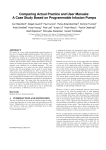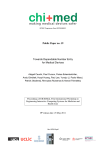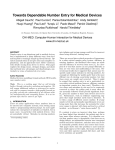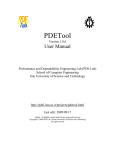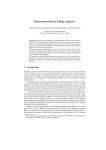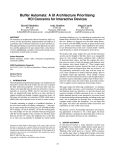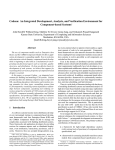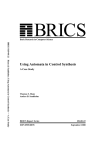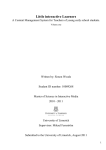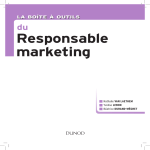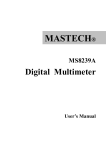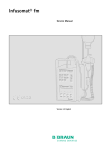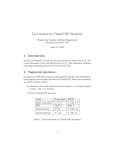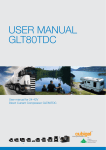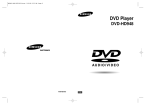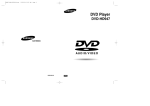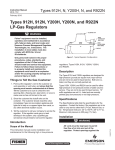Download A Case Study based on Programmable Infusion Pumps
Transcript
EPSRC Programme Grant EP/G059063/1
Public Paper no. 20
Comparing Actual Practice and User Manuals:
A Case Study based on Programmable
Infusion Pumps
Ann Blandford, Abigail Cauchi, Paul Curzon,
Parisa Eslambolchilar, Dominin Furniss, Andy Gimblett,
Huayi Huang, Paul Lee, Yunqiu Li, Paolo Masci, Patrick
Oladimeji, Atish Rajkomar, Rimvydas Ruksenas
& Harold Thimbleby
Proceedings of EICS4Med, First International Workshop on
Engineering Interactive Computing Systems for Medicine and
Health Care
PP release date: 25 May 2011
file: WP020.pdf
Comparing Actual Practice and User Manuals:
A Case Study Based on Programmable Infusion Pumps
Ann Blandford,4 Abigail Cauchi,3 Paul Curzon,1 Parisa Eslambolchilar,3 Dominic Furniss,4
Andy Gimblett,3 Huayi Huang,1 Paul Lee,2 Yunqiu Li,3 Paolo Masci∗1, Patrick Oladimeji,3
Atish Rajkomar,4 Rimvydas Rukšėnas,1 Harold Thimbleby3
(1) Queen Mary University of London, (2) Singleton Hospital, Swansea,
(3) Swansea University, (4) University College London
CHI-MED: Computer-Human Interaction for Medical Devices
www.chi-med.ac.uk
ABSTRACT
We report on a case study investigating current practice in
the use of a programmable infusion pump. We start by formalising an existing description of the procedure followed
by nurses for setting up a commercial infusion pump obtained via observation and interview. We then compare and
contrast this procedure with a formal description of the sequence of actions reported in the pump’s user manual. Mismatches were validated by a training manager. The aim
of this comparison is to point out how minor mismatches
between the two descriptions can be used to reveal major
safety issues. Our contributions are: first, we analyse a realworld system and show the importance of having a clear and
consistent specification of the procedures; second, we show
how a graph-based notation can be conveniently used as the
basis for building non-ambiguous and intuitive specifications
in higher-order logic. We argue that this can provide support to an investigator when building a description of actual
practice in that it can help focus attention on areas to observe more closely and on questions to ask to understand
why procedures, as followed, are the way they are.
Keywords
Medical devices; Formal methods.
1.
INTRODUCTION AND MOTIVATION
The use of medical devices such as infusion pumps is safetycritical and therefore it is vital that safe procedures are followed. Manufacturers set out such procedures in the manuals. However, with any complex technology there is often
∗
Corresponding author.
EICS4Med Workshop at EICS 2011
a mismatch between the prescribed usage and the actual
behaviour of people using it. Such behaviour is not necessarily unsafe or even wrong. It can occur due to differences
in context from the expected, or workarounds to improve
efficiency for example.
Manuals can be used as one of the approaches for designers
to express their conceptual model. Furthermore, manuals
can be one of the approaches used by designers to communicate their conceptual model of the system to users. However, when device users are developing their mental models
of the same system, the manual only fills part of the picture. The procedure recommended by the designer is first
interpreted by the training staff, before it reaches the nurses.
The nurses then construct their mental models of how the
system should work through training and interaction before
using it in practice. In both stages, the model is influenced
by other factors, such as existing conventions used to program other devices, personal preferences and sometimes the
capability of interpreting technical terms.
However, if there is such a mismatch between what nurses
are trained to do, what the manual says or what happens
in reality, then this mismatch might be dangerous. It could
be for example, that those who developed the workarounds
were not aware of the reasons for the prescribed procedure
and so are omitting safety checks [6]. It is therefore important to have a clear, rigorous and consistent way to analyse
the procedures prescribed in training, those in manuals and
actual practice in fine detail. This would allow us to better
understand these procedures and so detect potentially dangerous mismatches to ensure that we do not facilitate the
widespread acceptance of these potential “latent errors”.
We use a graph-based notation for building an abstract description of current practice and user manuals, and we translate such a description into higher-order logic for generating
a non-ambiguous specification suitable to be analysed in automated reasoning tools, such as PVS [7] or SAL [2]. In
order to trial our ideas, here we consider a case study on
programmable infusion pumps: we show how actual practice and user manuals can be specified in higher-order logic,
has up, down, left and right arrow buttons for navigating
through menus and entering numbers. The dot matrix display of the pump shows the current state of the pump as
well as instructions of what the buttons do in that current
state to aid user interaction.
3.1
Figure 1: B.Braun Infusomat Space
and we present the insights we gained on the design of procedures by analysing such a formal specification.
The paper is organised as follows. In Section 2, we report
on related work on formal methods applied to the analysis
of procedures and user manuals. In Section 3, we overview
the procedure followed by nurses for setting up an infusion
pump. In Section 4, we describe how we translated informal
descriptions into a higher-order logic specifications. In Section 5, we present the analysis carried out and the obtained
results. In Section 6, we conclude the paper.
2.
RELATED WORK
Several projects have explored how to combine formal modelling with user models as a way to obtain accurate user
manuals. For example, [9, 11] show how a user manual can
be automatically generated from a logic specification of a
design and that such an automated process can help detect
errors in the design.
Massink et al. [4] explore how model checking can be used
to generate traces from a specification to answer how to and
what if questions posed in temporal logic. Weitl et al [12] explore how to maintain consistency of context dependent documents including training manuals, focusing on user support
by a pattern-based specification methodology. They combine temporal logic, ontologies, and a pattern-based specification approach.
Hebert [3] investigated the degree to which manuals were
user tested to check their quality in six high-tech companies through interviews with key people. Where testing was
done, testing methods were generally found to be limited.
3.
PROCEDURE FOR SETTING UP A PROGRAMMABLE INFUSION PUMP
In this section, we overview the description of the procedure followed by medical practitioners for setting up programmable infusion pumps as analysed in the study [8] that
the work described here is based on. For the purposes of
this paper, we focus on the sequence of actions carried out
by nurses for starting a constant flow rate infusion. For clarity of exposition, we use a slightly re-worded version of the
original description here.
In the particular hospital studied, the B.Braun Infusomat
Space infusion pump was used (see Figure 1). The pump
Setting up a Constant Flow Rate Infusion
In intensive care units, nurses prepare and administer drugs
according to prescriptions decided by doctors. Specifically,
nurses prepare the medication, fill a bag with it, and then
administer it through an infusion pump. The informal description of the activities carried out by nurses follows. This
description describes the process in a single hospital as obtained through observation and interviews. In the description here, we will use a level of detail appropriate for the
purposes of this article only. Readers interested in the full,
original description, which has been validated by a senior
nurse, should refer to [8].
Preparing a bag with the medication. In the particular hospital studied, the list of drugs to be administered to a patient
and the details for preparing the medication are reported in
the electronic patient record. Nurses read such information and proceed as follows: they prepare the bag with the
medication and stick a descriptive label onto the bag; they
connect the infusion line to the bag; they prime the infusion
line, i.e., they push the fluid to the tip of the infusion line
in order to bleed all air bubbles from the infusion line.
Starting the infusion. The infusion pump is turned on by
pressing the On/Off button. When the pump is turned on,
the nurse can open the pump door by pressing the Open
button, and insert the infusion line in the pump: the infusion
line end connected to the bag must be placed into the Inlet
Line, while the other end must be fit into the Outlet line.
The pump door can be closed after inserting the line in the
pump. At this point, the pump displays the main menu,
and the nurse can set up the infusion rate by selecting the
Infusion Rate menu item. This item is the first in the main
menu of the pump, and is highlighted by default. When
setting up the infusion rate, the pump displays a number
.
”), and the
of digit spots with a decimal point (“
first digit spot is selected by default. The nurse can use the
Up/Down Arrow buttons for increasing/decreasing the digit,
and the Left/Right Arrow buttons for highlighting a digit.
Once the correct digits have been entered, the nurse presses
the Ok button to confirm the entered value. Once the value
has been confirmed, the pump displays the main menu. At
this point, the nurse presses the Start/Stop button to start
the infusion.
4.
FORMAL SPECIFICATION
In this section, we translate the informal description of the
activities carried out by nurses into a formal specification.
Such a specification can be mechanically analysed with automated reasoning tools, such as in [10]. The notation we use
draws concepts from Activity Networks [5], a widely used
formalism for modelling complex concurrent systems, and
relies on higher-order logic to formally specify both the dependency relations among activities and the activities themselves.
The formal specification for the activities carried out by the
Figure 2: Procedure followed by nurses for preparing a bag with the medication
Figure 3: Procedure followed by nurses for starting the infusion
nurse in preparing a bag with the medication and for starting the infusion is graphically depicted as a labelled graph in
Figures 2 and 3. In the graph, labelled nodes represent activities, and edges between nodes represent causal and temporal dependency relations among activities. An activity
can be performed only if all directly connected activities
have already been performed. For instance, consider the activity “Nurse prepares bag with medication” shown in Figure
2; such an activity can be performed only if two other activities have already been performed (“Nurse reads list of
drugs” and “Nurse reads details for preparing medication”).
Edges in the graph may have labels that specify control-flow
conditions.
In the following, we show how activities can be specified in
higher-order logic. To this end, we describe an excerpt from
our formal specification developed in the PVS specification
and verification system [7]. The PVS specification language
builds on classical typed higher-order logic with the usual
base types (e.g., bool, nat, integer and real), function
type constructors [A -> B] (predicates are functions with
boolean range type), structured data types, and abstract
data types. PVS specifications are packaged as theories.
PVS theories can use definitions and theorems of other the-
ories by importing them. Providing a detailed description
of the developed PVS theories is beyond the scope of this
paper.
In the following we outline the formal definition of a simple
activity from the theory concerned with preparing a bag.
Our aim is to give a feel for the style of specification used.
In the prepare_bag_th theory, given in Figure 4, we have
two type definitions: the first definition specifies the pump
state as a structured data type (pump_state) containing two
fields (display, of type message, and door, of a user-defined
enumerated type); similarly, the other type definitions specify the bag state as an enumerated data type, and the system
state as a structured data type with four fields, which represent the pump, the bag, the infusion line, and the roller
clamp.
The activities carried out by nurses are specified as transition functions over the system state. In our example, in
Figure 4, we specify the activity “Pump powers up” as a
(higher-order) function that changes the state of the pump
according to the pressed button, which is specified as function parameter. The keyword LAMBDA here just specifies that
a function follows, taking in this case a single argument —
prepare_bag_th: THEORY BEGIN %-- imports omitted
pump_state : TYPE =
[# display: message,
door
: bool #] %-- 1=open, 0=closed
bag_state
: TYPE =
{new_bag, labelled, empty}
system_state: TYPE =
[# pump: pump_state,
bag: bag_state,
roller_clamp: bool #] %-- 1=open, 0=closed
pump_powers_up(b: button):
[system_state -> system_state] =
LAMBDA(sys: system_state):
IF b = On_Off_button
THEN LET new_pump_state = pump(sys)
WITH [ display := turned_on ]
IN sys WITH [ pump := new_pump_state ]
ELSE sys ENDIF
%-- more definitions omitted
END prepare_bag_th
semantics of natural language, and affects the description of
activity “Pump displays ”
.
” (the first digit spot is
highlighted by default)”. The activity is under-specified, since
it is not clear which is the first digit spot. Is it the left-most
spot? Is it the first integer spot? We checked the real pump,
and the right interpretation is the latter one. The second
issue is related to numeric entries. The description reported
in Figure 3, indeed, reports that “Nurse presses Up/Down
arrow buttons to increment/decrement digits”, while this is
not the case in the real pump –for instance, the up button,
which is used to increase the infusion rate, is also used as a
recall memory button in certain device modes.
Figure 4: The formal specification of an example
activity (pump powers up)
The procedure for preparing a bag as described in the manual is relatively simple consisting of only four steps (see Figure 5). If we compare this description with the actual procedure followed by nurses (which is reported in Figure 2),
we can notice two main differences.
the system state — and returning a new system state as determined by an IF statement. If the button pressed is the
On/Off button, then the new pump state part of the system
state is the same as the old one but with the display part of
the state turned on.
The activity described above is just one activity. We also
formalised all other activities depicted in Figure 4. The
advantage of providing a formal specification such as this is
that it gives a very precise and unambiguous description of
the procedure that is not open to different interpretation as
with an informal description. This is because the language
used has a precise and well defined mathematical meaning.
This also opens up the possibility of using mathematical
analysis tools to explore the consequences of the procedure
and compare it with others.
5.
ANALYSIS
We carried out two kinds of analysis on the formal specification of the procedure. The first analysis was intended
to ensure semantic constraints, such as checking the consistency of control flow conditions, and the completeness of
the activities’ specification. This kind of analysis has the
potential to detect inconsistencies between different parts
of the specification and that nothing is missing from the
behaviour described. For example it could highlight decision points where the consequences of only one branch of
the decision has been specified. The second kind of analysis
compares the procedures carried out by nurses in the real
system (i.e., the best practice) against the sequence of actions specified in the user manual, and aims at pointing out
possible mismatches that may lead to safety issues. This is
done by creating two formal descriptions of the procedures,
one from the observed behaviour and one based on what is
described in the manual.
5.1
Checking Semantic Constraints
While translating the informal description of the procedure
into a higher-order logic specification, we discovered two issues. The first issue is due to the inherently ambiguous
5.2
Actual Practice and the User Manual
In comparing the actual practice with that described in
the B.Braun user manual a range of significant differences
emerged.
1. In the actual procedure, nurses prime the infusion line,
while the manual reports only that the infusion line must
be filled from bottom to top, and postpones priming at a
later stage, just before establishing the connection with the
patient (see Figure 6).
2. The manual explicitly reports that the bag must not be
below the pump level (see the grey box of Figure 5); this
detail is omitted in the description of the actual procedure.
We have checked the procedure with a medical devices training manager. The procedure actually followed by nurses is
correct: nurses should not simply fill the infusion line, but
also prime the line. Also, nurses are taught to place the
bag above the pump level: the omitted detail is probably
due to the physical setup in the hospital observed, which
constrains the bag to be always above the pump level (the
bag needs to be attached to a hook which is fixed above the
pump level). This effectively removes the need for the step
of checking that the bag is not below the pump level, and
could be why nurses did not report this step when describing
the procedure they follow.
Several mismatches are highlighted in the procedure for starting the infusion with respect to the actual procedure followed
by nurses. Two main types of mismatches can be evidenced:
Missing details on constraints and precautions. The
manual provides a number of constraints that should be ensured by nurses while starting the infusion (e.g., nurses must
ensure that the pump is properly installed before turning
the pump on), and precautions during particular activities
(e.g., nurses must never leave the pump unattended while
inserting the infusion line).
Different sequence of actions. The manual explicitly
reports that the pump can be used to prime the infusion line,
but also states that such function can be disabled. When
the function is disabled, the manual simply proceeds to the
Figure 5: Procedure specified in B.Braun’s Manual for preparing a bag with the medication
Figure 6: Procedure specified in B.Braun’s Manual for starting the infusion
next step (“Press the Up Arrow if the prime function is enabled. [...] Then press Down Arrow to proceed. Establish
the patient connection” [1]).
We engaged a medical devices training manager for discussing the above differences. It turns out that the missing
details on constraints and precautions are not only related
to activities that nurses simply omit to explicitly state (e.g.,
nurses are aware of the situations in which there is a danger of free-flow), but there are also a number of activities
that nurses are actually not able to perform due to the particular work context, which is always very busy and does
not allow nurses to dedicate time to certain activities, such
as observing the messages shown by the pump during the
self-test.
Regarding the different sequence of actions, the most critical
difference is related to priming the infusion line. The manual
reports that it can be done with the pump, given that the
prime function is enabled on the pump; if the function is
disabled, the next step is to establish the patient connection
(see Figure 6). However, before starting the infusion, the
line must be primed, otherwise there is a safety issue for the
patient. The manual omits to point out this detail, and the
procedure, as described in the manual, is not best practice.
The medical devices training manager reported that, in fact,
there were incidents due to nurses and trainers following
procedures reported in the manuals, like the one described.
6.
DISCUSSION AND CONCLUSIONS
We have described a study that compares a formal specification of actual practice for setting up an infusion pump with
a formal specification of the sequence of actions described in
the user manual of the pump. The study is based on a real
pump and on observations made in a real hospital.
We discovered several issues and mismatches, such as ambiguity in the language used in the descriptions, and various
checks prescribed in the manual of the pump but omitted in
the actual practice. Our study shows how a model-based engineering approach can be conveniently used to support an
investigator to understand workflow situations. Such issues
are easily missed when using only informal descriptions.
The formalisation process uncovered an issue in the user
manual related to priming the line (the procedure described
in the manual was not consistent with the actual best practice). This demonstrates that a model-based engineering
approach could be used to improve manuals and training
material. Whilst this study concerned a B.Braun pump we
believe that similar issues would apply with the pumps of
other manufacturers and their actual use.
Understanding how devices are used in practice and pointing
out issues with manuals is of potential use to manufacturers,
trainers and procurement staff. For example, if staff are
using workarounds then it is important for device designers
to be aware of this so that they can determine whether these
practices are safe.
Providing a direct support in training literature is likely to
provide a commercial advantage for manufacturers: if such
workarounds are adapted to context to make the pump use
easier or more effective, then the pump in question would
better support the nurses in doing their work. On the other
hand if the practices are unsafe, it is in the manufacturer’s
interest to design the device in ways to remove the need or
possibility of such workarounds. Similarly, if a device design
is such that unsafe practices result to deal with the realities of the job, then training and procurement staff need to
know how to improve procurement decisions and training
regimes. Also, if training staff are aware of why procedures
are the way they are, then they can help spread good practice. Formal specifications can be simulated, and this opens
up the possibility of automatically generating visualisation
tools of scenarios for use in training (either to show bad
consequences of actions or to illustrate ways to improve performance and safety).
Whilst in this study the investigation of actual behaviour
was complete when the formal work was carried out, these
techniques could also help an investigator collecting ethnographical data and actually build a deeper understanding of
the system as observations and interviews take place. For
example, insights gained during model-based analysis can
help focus attention on areas to observe more closely and
questions to ask. When only an informal description is being used, such issues can easily be missed.
Current tools are not at a stage of maturity that an actual investigator could easily develop a formal specification
and analyse it, though this may be possible in the future
as the techniques are developed and built into tools. In the
meantime, however, the approach can be applied if a formal
methods expert is paired with the investigator to do model
development and analysis and interpret the results in dialogue with the investigator.
Acknowledgements
Funded as part of the CHI+MED: Multidisciplinary ComputerHuman Interaction research for the design and safe use of
interactive medical devices project, EPSRC Grant Number
EP/G059063/1, Formally-based tools for user interface analysis and design, EPSRC Grant Number EP/F020031/1, and
Extreme Reasoning Grant Number EP/F02309X/1.
7.
REFERENCES
[1] B|Braun Melsungen AG. Infusomat space and
accessory: Instruction for use (ver. 686e).
[2] Leonardo de Moura, Sam Owre, Harald Ruess, John
Rushby, N. Shankar, Maria Sorea, and Ashish Tiwari.
SAL 2. In Rajeev Alur and Doron A. Peled, editors,
Computer Aided Verification: CAV 2004, volume 3114
of Lecture Notes in Computer Science, pages 496–500.
Springer-Verlag, July 2004.
[3] Susan M. Hebert. The cat in the reaper: Usability
testing of software instruction manuals. Master’s
thesis, San Jose State University, 1989.
[4] M. Massink and D. Latella. Deriving Manuals from
Formal Specifications, volume 1. 2003.
[5] A. Movaghar and J.F. Meyer. Performability
modelling with stochastic activity networks. In
Proceedings of the 1984 Real-Time Systems
Symposium, pages 215–224, 1984.
[6] Donald A. Norman. The Design of Everyday Things.
Basic Books, New York, reprint paperback edition,
2002.
[7] S. Owre, S. Rajan, J.M. Rushby, N. Shankar, and
M.K. Srivas. PVS: combining specification, proof
checking, and model checking. In Rajeev Alur and
Thomas A. Henzinger, editors, Computer-Aided
Verification, CAV ’96, number 1102 in Lecture Notes
in Computer Science, pages 411–414, New Brunswick,
NJ, July/August 1996. Springer-Verlag.
[8] Atish Rajkomar. Extending distributed cognition
analysis for complex work settings: a case study of
infusion pumps in the intensive care unit., 2010. MSc
Thesis.
[9] H. Thimbleby and P. B. Ladkin. From logic to
manuals. Software Engineering Journal,
11(6):347–354, 1997.
[10] Harold Thimbleby. Contributing to safety and due
diligence in safety-critical interactive systems
development by generating and analyzing finite state
models. In Proceedings of the 1st ACM SIGCHI
symposium on Engineering interactive computing
systems, EICS ’09, pages 221–230, New York, NY,
USA, 2009. ACM.
[11] Harold W. Thimbleby and Peter B. Ladkin. From
logic to manuals again. IEEE Proceedings - Software,
144(3):185–192, 1997.
[12] Franz Weitl, Mirjana Jakšić, and Burkhard Freitag.
Towards the automated verification of semi-structured
documents. Data Knowl. Eng., 68:292–317, March
2009.







